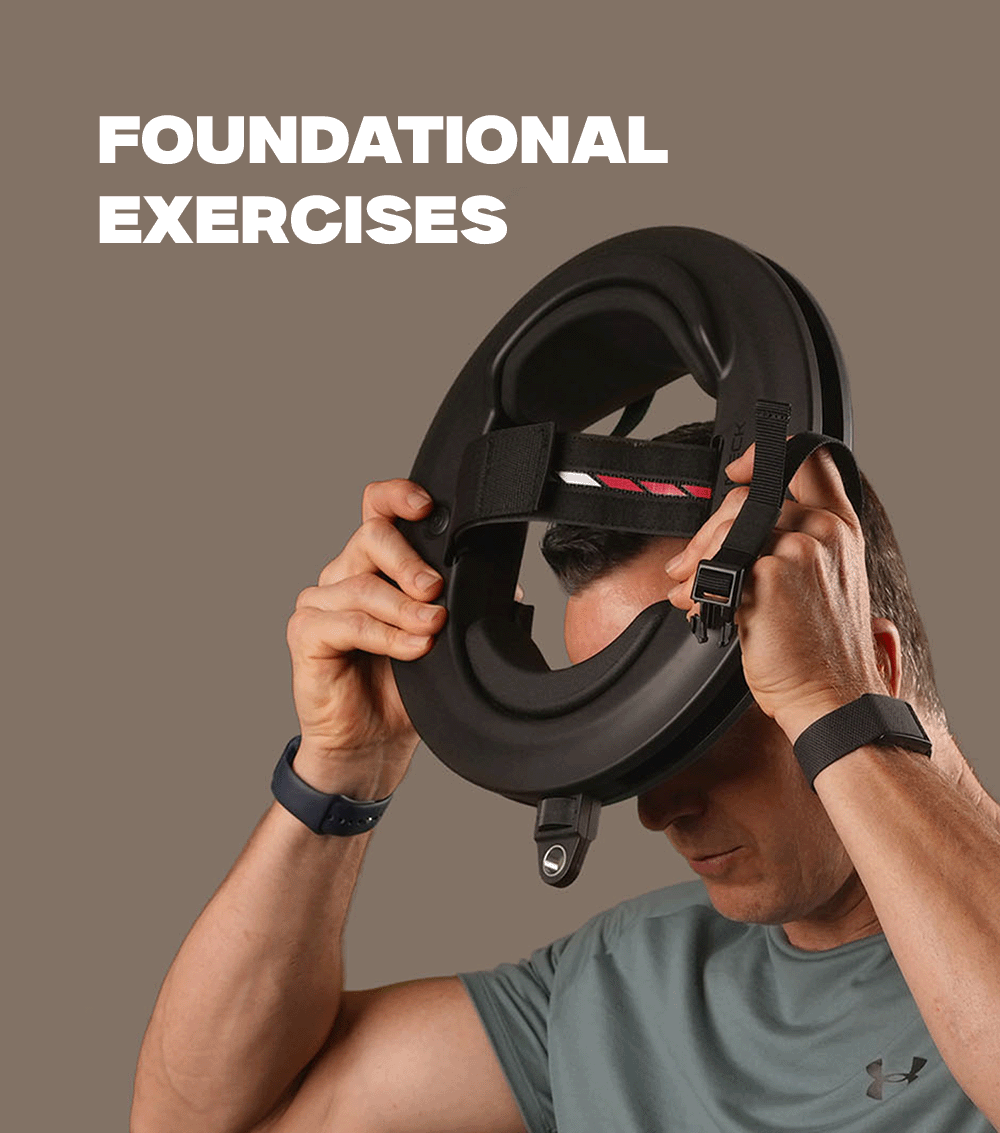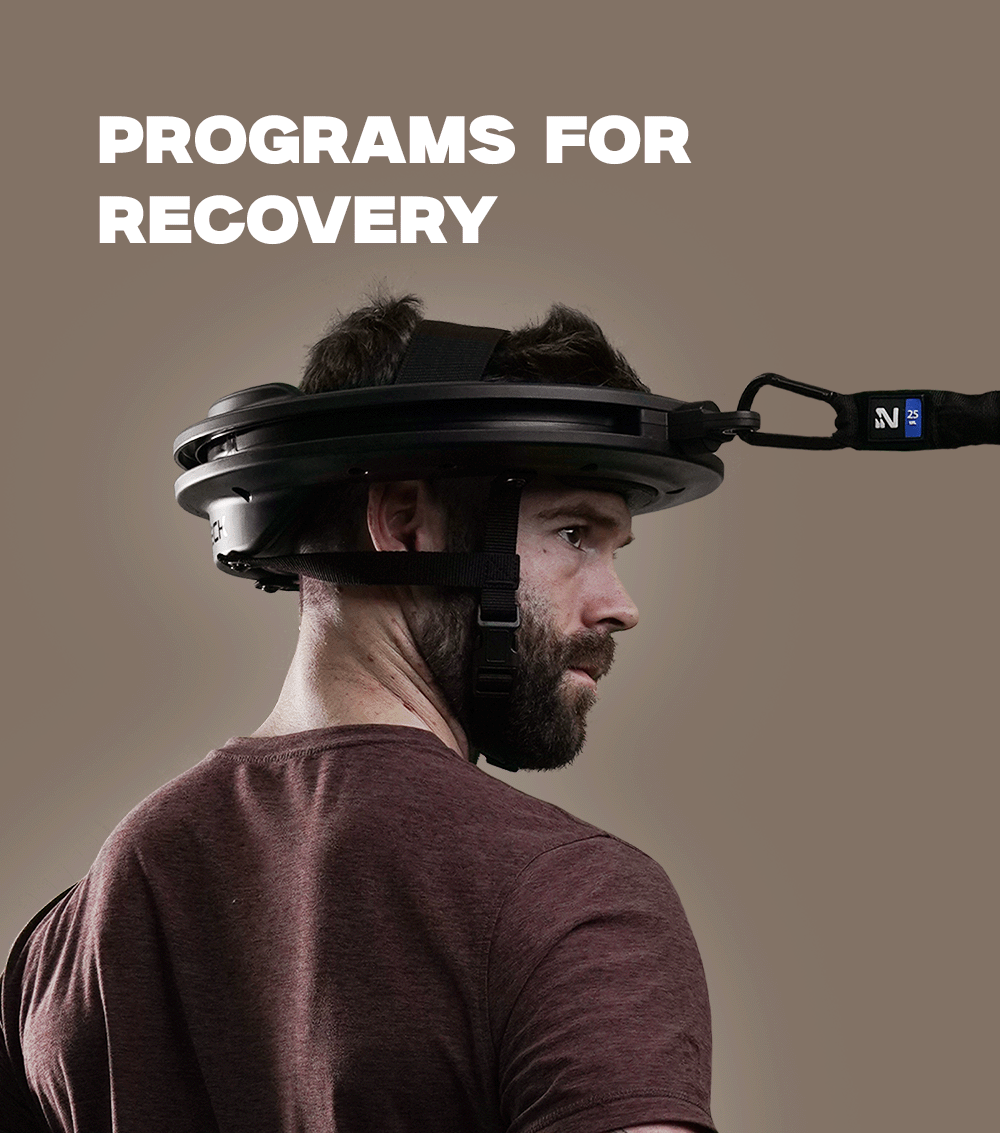Neck strength isn’t just for athletes or bodybuilders. It’s your first line of defense against injury, poor posture, and limited performance.
Whether you’re recovering from pain, sitting at a desk all day, or pushing your limits in sport, stronger neck muscles help protect the spine, stabilize movement, and improve overall body alignment. And yet, most people ignore it until something goes wrong.
Top Benefits of Strong Neck Muscles
Building strong neck muscles isn’t about looks, it's about protection, alignment, and performance. Here’s what you gain [1, 2, 11]:
- May reduce head acceleration during impacts and improve control; does not prevent concussion
-
Improved posture and spinal alignment
-
Enhanced athletic performance through better head control and stability
-
Greater breathing efficiency due to better neck and ribcage positioning
-
Less daily neck stiffness, fatigue, and tension headaches
-
Stronger support for your kinetic chain in lifting, sprinting, and explosive movements
- Faster recovery and long-term resilience after impact or injury
A strong neck supports everything from your spine to your sport. It’s not optional, it's essential.
The Neck’s Role: Small Muscles, Big Impact
Your neck contains over 20 muscles working together to stabilize your head, support your spine, and coordinate movement.
Key muscle groups include:
-
Sternocleidomastoid muscle – for rotation and flexion
-
Upper trapezius – posture and shoulder movement
-
Scalenes & levator scapulae – for stabilization and breathing
-
Deep cervical flexors – for spinal alignment and head control
When these muscles are weak, you’re more likely to experience tension, poor posture, reduced performance, and injury.
Injury Prevention Starts With Neck Strength
Whether from a sports collision, car accident, or unexpected fall, your neck is vulnerable to high-impact forces.
Stronger neck muscles help:
-
Absorb shock
-
Reduce head acceleration
- Limit neck hyperextension and strain
Some studies associate greater neck strength or motor control with lower concussion incidence; evidence is mixed and does not prove prevention [7, 8, 10].
Even non-athletes benefit from the protection strong neck muscles provide in everyday situations from minor falls to sudden movements.
Better Posture Starts at the Top
Neck weakness is a hidden driver of poor posture. It often shows up as forward head tilt, rounded shoulders, and tight traps. Training your neck helps realign the spine and support natural posture. For step-by-step corrections, check out our article on how to fix bad neck posture [3, 4].
-
Forward head tilt
-
Rounded shoulders
- Tight traps and low back pain
Training your neck helps realign the spine, reposition the head, and support natural posture whether you’re at your desk or on the move.
Benefits of better posture include:
-
Improved breathing
-
Reduced joint strain
-
More confident physical presence
- Lower chance of chronic neck and back pain
Weak neck = bad posture. Fixing it starts at the top.
Athletic Performance: Why the Pros Train Their Necks
In sports, the neck is often the missing link in performance. From football and MMA to cycling and basketball, neck strength gives athletes the edge [7, 8].
Benefits include:
-
Better balance and body control
-
Improved agility and reaction time
-
Enhanced force transfer during lifts and sprints
- Greater durability under contact or fatigue
How to Train Your Neck Safely
Effective neck training focuses on controlled movement, multi-directional resistance, and progressive overload [1].
Start with:
-
Isometric holds (pressing against hand or resistance)
-
Neck flexion/extension/rotation exercises (3x10–15 reps)
-
Chin tucks and posture resets
- Dynamic resistance using bands or tools like Iron Neck
Always begin with low resistance and proper form to avoid dizziness or strain.
Train 2–3 times per week for strength and mobility. Use mirrors or devices with feedback to track progress and stay aligned.
Use light resistance in neutral or a small mid-range; stop with any neurological or vascular warning signs such as dizziness, visual change, numbness, weakness or unsteadiness.
Sport-Specific Neck Conditioning
Neck strength isn’t one-size-fits-all. Athletes across different disciplines face unique demands whether it’s absorbing impact, holding posture under load, resisting an opponent, or maintaining head control during high-speed movement [1].
Key Training Focus Areas:
-
Multi-directional resistance: Build strength through flexion, extension, lateral movement, and rotation. This prepares the neck for forces from any angle.
-
Isometric holds: Essential for stabilizing the head during static positions or high-contact scenarios.
-
Dynamic control: Training with controlled resistance builds reactive strength, helping you stay balanced and protected when conditions shift.
-
Endurance under load: High-rep, low-resistance work improves muscular stamina for longer bouts of activity or extended time under tension.
- Postural alignment: Keeping the head in a neutral position improves total-body mechanics, reduces fatigue, and prevents compensation injuries.
Whether your sport involves contact, speed, endurance, or precision, your neck plays a role.
Return-to-play strength work when cleared by a clinician as part of a supervised, stepwise plan [7, 10].
Train Like the Pros: Iron Neck Sports Performance Programming
Iron Neck isn’t just a training device, it's part of a complete sports performance system used by pro teams, D1 programs, and tactical units.
These evidence-based programs are built around the same core principles used in elite strength and conditioning:
-
Progressive overload based on volume, resistance, and movement quality
-
Sport-relevant movement patterns that mimic real-world impact, rotation, and bracing
-
Recovery and load management protocols for in-season and off-season athletes
- Return-to-play strategies to rebuild strength after injury or concussion
From foundational motor control to advanced reactive training, Iron Neck programs help athletes build resilient necks that perform under pressure game after game.
Whether you're an individual athlete or a team coach, these plug-and-play protocols are designed for real-world training environments.
Iron Neck for Everyday Training & Rehab
You don’t need to be a pro athlete to benefit from Iron Neck. While our system powers elite teams and tactical units, it’s just as effective for individuals training at home, recovering from pain, or building strength after injury[1, 6].
Iron Neck can be used to train in neutral or a small mid-range with low-impact, controlled resistance; do not perform continuous 360-degree spins or end-range positions under load.
Whether you're in rehab, returning to sport, or just improving posture, Iron Neck gives you safe, structured training built around your goals.
Iron Neck Training Lab™ delivers the best content and instructions to help you achieve your health and fitness goals.
Who should not start neck training without clinical advice:
- Recent significant neck trauma or suspected fracture
- Progressive neurological deficit, gait disturbance or hand clumsiness
- Known vertebral or carotid artery disease, or recent stroke or TIA
- Post-operative cervical spine status without surgeon clearance
- Connective-tissue laxity disorders or diagnosed cervical instability
- Severe osteoporosis
Stop rules: stop immediately with dizziness, visual change, slurred speech, limb weakness, numbness or tingling, unsteadiness, or electric-like facial pain [5, 6].
FAQ: Common Questions About Neck Strength
1. How often should I train my neck?
2–3 times per week. More advanced athletes may train more frequently at lower intensities.
2. Can strong neck muscles help with headaches?
Yes. Weak neck muscles and poor posture often lead to tension headaches. Strengthening and aligning the neck can reduce frequency and intensity. Seek assessment for new, severe or atypical headaches before starting exercises [5].
3. Is neck training safe for beginners?
Yes, as long as you start with light resistance, proper technique, and gradually progress. Iron Neck offers beginner-friendly programs. Train in mid-range only; increase slowly; stop with neurological or vascular warning signs.
4. What does it mean when you have a strong neck?
It means your neck muscles can support your head, absorb impact, and maintain proper posture. A strong neck improves control, reduces injury risk, and supports better performance.
References
- Blanpied PR, Gross AR, Elliott JM, et al. Neck Pain: Clinical Practice Guidelines—Revision 2017. J Orthop Sports Phys Ther. 2017;47(7):A1–A83.
- Gross AR, Kay TM, Paquin J-P, et al. Exercises for mechanical neck disorders. Cochrane Database Syst Rev. 2015;CD004250.
- Jull GA, Falla D, Vicenzino B, Hodges PW. Training the cervical flexor muscles: randomised trial on motor control and posture. Spine. 2002;27(8):829–837.
- Jull GA, O’Leary SP, Falla DL. Clinical assessment and low-load training of deep cervical flexors. J Manipulative Physiol Ther. 2008;31(7):525–533.
- Childress MA, Stuek SJ. Neck pain: initial evaluation and management. Am Fam Physician. 2020;102(3):150–156.
- Jadhav AP, Yaghi S, Engelter S, et al. Treatment and outcomes of cervical artery dissection in adults: AHA/ASA Scientific Statement. Stroke. 2024;55:e91–e106.
- CDC. HEADS UP helmet safety resources. “There is no concussion-proof helmet.” 2018–2025.
- Garrett JM, Kerr ZY, Parr MS, et al. Neck strength and sports-related concussion in team sports: systematic review with meta-analysis. J Orthop Sports Phys Ther. 2023;53(10):585–593.
- American College of Sports Medicine. Position stand: progression models in resistance training for healthy adults. Med Sci Sports Exerc. 2009;41(3):687–708.
- Mills BM, Anderson S, Courson R, et al. Consensus recommendations for suspected catastrophic cervical spine injury in athletes. Clin J Sport Med. 2020;30(6):471–482.
- Kapreli E, Vourazanis E, Strimpakos N. Respiratory dysfunction in chronic neck pain. Man Ther. 2009;14(1):49–53.
Disclaimer: The Iron Neck blog provides educational content on neck training, fitness, and recovery. It’s not a substitute for medical advice, please consult a healthcare professional before starting any new exercise or recovery program.










Leave a comment
This site is protected by hCaptcha and the hCaptcha Privacy Policy and Terms of Service apply.